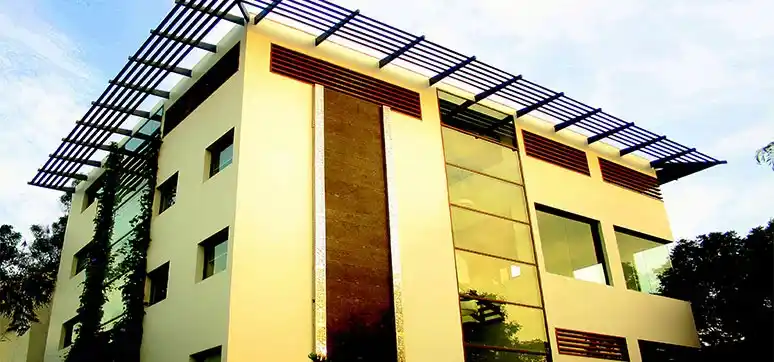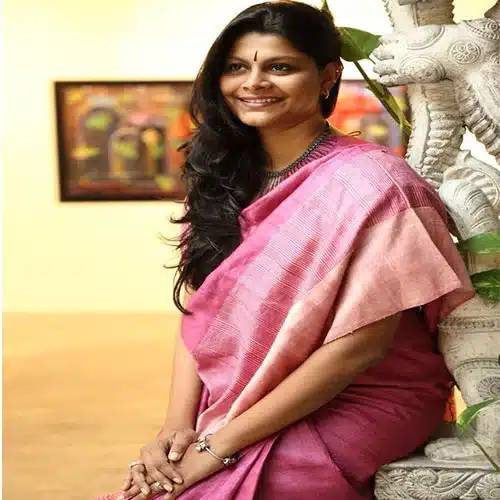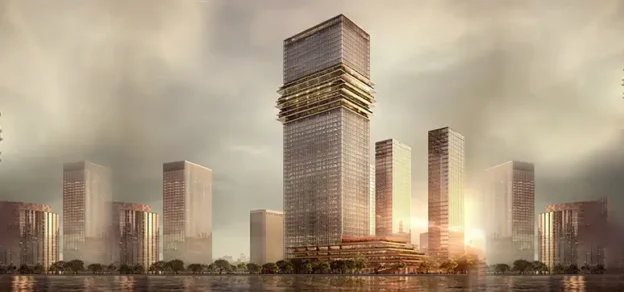The MUSE is a multi-tenanted office space in Chennai that houses an architectural studio, a tech start-up and an art gallery. Designed based on the philosophy of Indo-centric sustainability, the collaborative workspace encompasses three green shafts within the space – these provide light, cooling and oxygen to the office spaces throughout. The eco-friendly office space includes benefits such as lower operating costs and a reduced carbon footprint.
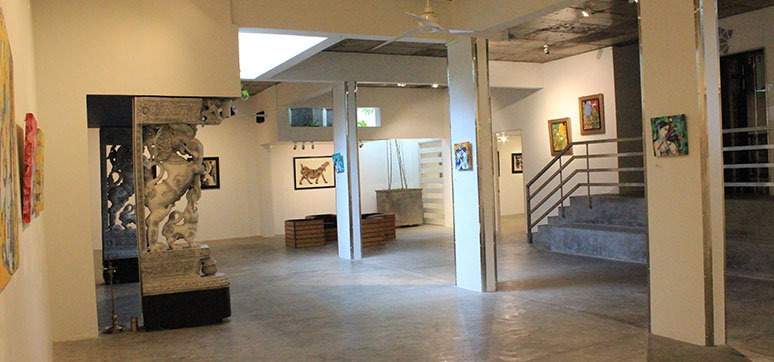
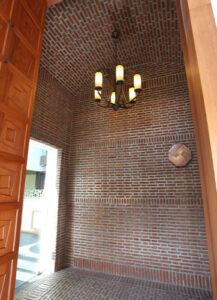
The entire office is naturally lit and provided with task LEDs for the evenings; solar-powered air conditioning is required only after the chiller slab and green roof have reduced the indoor temperature. These techniques help in 30% energy and water savings, reduced construction and maintenance costs and a superior indoor environment resulting in higher productivity. “Innovation and sustainability are at the core of Shilpa Architects’ culture and what our clients and people expect,” said Pavitra Sri Prakash, Design Director, and Chief Planner at Shilpa Architects. “I am proud of all that we have achieved to make the studio a collaborative and modern work environment, as it stands to symbolize our approach to sustainable design thinking around the globe”.
The building uses a number of green technologies such as slab cooling, active solar power utilization and a specially insulated western façade to reduce incident radiation all of which contribute towards its LEED Platinum rating. The spatial planning was based on the principles of sculpting from a volume rather than a horizontal plan approach. The green shafts were strategically located as the primary air conditioning shafts and serve as buffered glazed pockets which run through the height of the building. The staggered levels were then connected with staircases and floating mezzanines to create the office spaces. The planning of the façades form a part of the passive architectural techniques that contribute to the low energy footprint of the building.
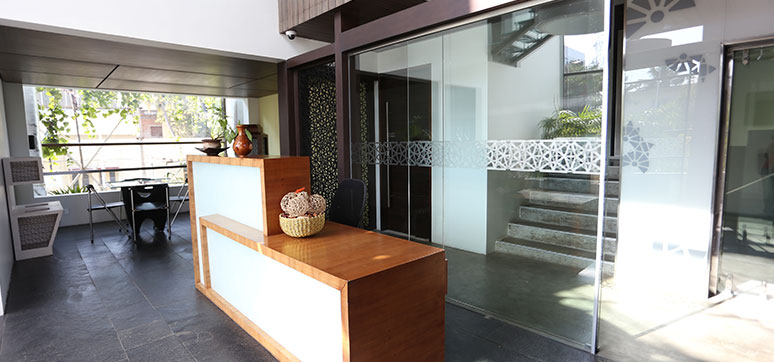
The principle of reducing demand for cooling in order to thereby optimise the amount of AC tonnage needed for cooling was applied very stringently. Every façade was simulated and the Window Wall Ratio was balanced to bring in the best light with the least heat and glare into the offices. The south façade was carefully screened by an outer green wall. This helps cut down the Axonometric view showing green principles direct radiation on the glass. These “Green screens” provide natural shade and insulation as well as good light quality inside the office throughout the day.

The architects were particular about not using performance glass in order to keep the costs and budgets in check, as well as provide a uniform look across the east, north and south façade. The east elevation forms the front façade and is visually split into three distinct aesthetic features: façade lights inspired by traditional kanjivaram weave the contemporary ‘bubble’ lights above the suspended stair and the antique up-cycled doors on the ceiling of the breakout space. The glass on this façade was specially treated with a coating film to reduce the heat radiation from 8 am to 11 am during which time there is direct sunlight on this side. The shading overhangs and size of glass was carefully designed through a series of simulated studies – this allowed for the right sizing of the façade elements of fins and projections balanced with glass and solid walls.
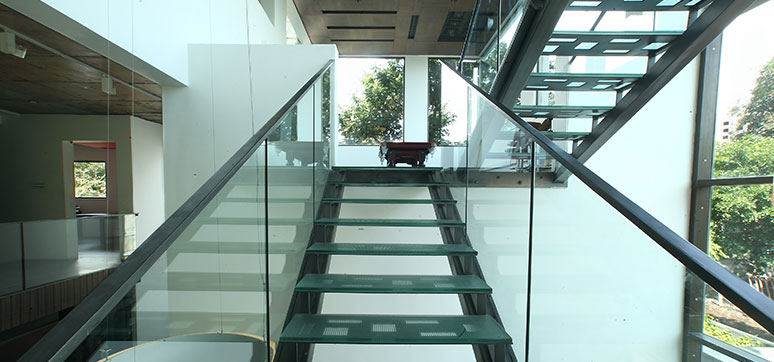
The western façade wherein there was likely maximum heat gain contains all non regularly occupied areas such as toilets, pantries and storage rooms – this strategy buffers the wester solar radiation from entering the conditioned office spaces very effectively.

Multi-layered pipes exchange heat between the buildings’ floor slabs with chilled water. The hybrid system combines
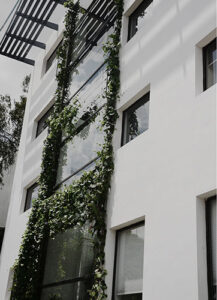
• Geothermal cooling mechanisms
• Specially designed vertical ducts that are housed within the green shafts
• Solar powered AHU’s The indoor air quality is maintained by a nightly flush of air providing fresh, cool, clean air every morning. Fractal ‘jaalis’ reused
antique architectural elements, and the involvement of local artisans put this project on the radar of ingenuous spaces; but what really sets it apart is the Indianised design approach that endorses large inlets for natural light and vegetation screens on the south façade.
Rooted within the design principle, the jaali has evolved from the company logo. The pattern forms the character building element for the interior and is interpreted throughout the spaces in varying form, scale composition and materiality. The materiality of the application ranges from iron, stainless steel, glass and fabric forming partitions, customised lighting and furniture.
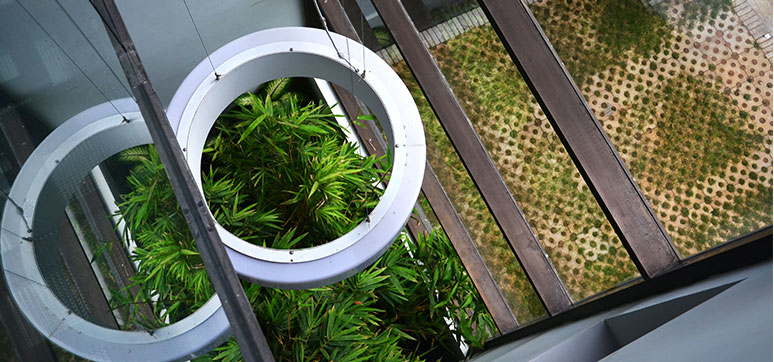
The global design studio of Shilpa Architects Planners Designers was awarded the Leadership in Energy and Environmental Design (LEED) Platinum rating for New Construction by the Indian Green Building Council (IGBC). The LEED Platinum certification is an endorsement of SHILPA’s design philosophies, and corporate responsibility goals.
QUICK FACTS:
Project Name: The MUSE
Location: Chennai
Client: Shilpa Architects
Architect: Ar. Sheila Sriprakash, Ar. Pavitra Sriprakash
Other Consultants: ATE
Materials used for façade & fenestration: Glass, Aluminium, Granite, SS jaali
Commencement Date &Completion Date: March 2012 – March 2014
